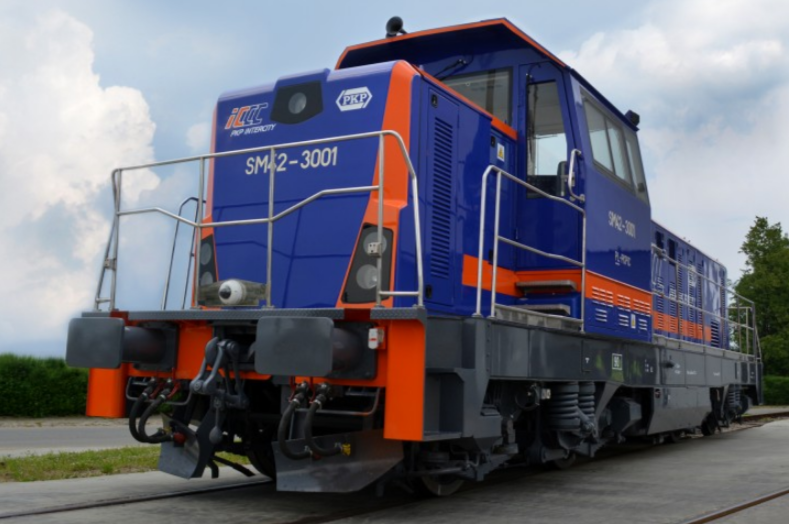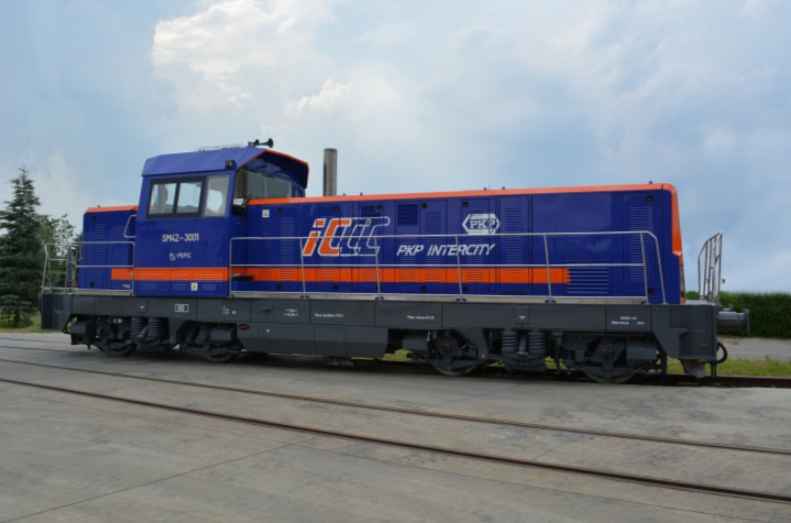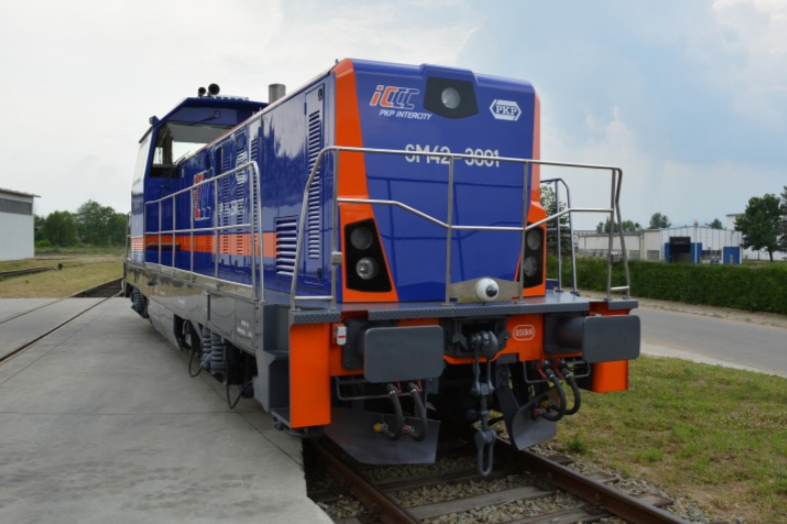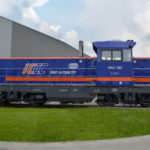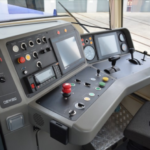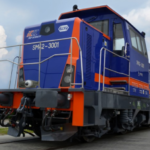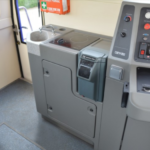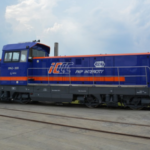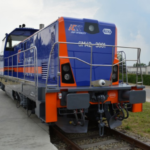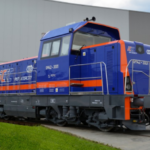The 18 D type locomotive is the second generation of the modernization of the SM42 locomotive series conducted by NEWAG S.A.
The scope of the modernization of SM42 locomotive series to 18D type included constructing a completely new loco body. Only the old locomotive underframe, existing bogies and fuel tanks were left from the old locomotive. The loco was equipped with a modern diesel engine of 563 kW power, compliant with Stage IIIB emission standards, connected with a synchronous generator set. The starter powered from the supercondenser ensures the engine’s proper start-up despite bad weather conditions. Locomotives are fitted with a modern braking system using a screw compressor and a spring-actuated parking brake. The power for auxilliary equipment is supplied by asynchronous engines. The locomotive also received a microprocessor control system, electronic fuel measuring system, a fire-detection system and a GPS. As part of the modernisation, special energy absorbing crash buffers were mounted.
The loco designers have also focused on the functional and aesthetic solutions. The driver’s cab, whose walls have been covered by mat composite panels, has two ergonomic control panels for the driver. The loco driver can use such amenities as a hob plate, fridge, a washbasin with hot water and a locker. The cab has air-conditioning, efficient heating and LED lighting. Wide doors placed on front walls of the cab lead onto platforms. The lowered machine room ceiling and panoramic windscreens provide very good visibility and meet the contemporary requirements in design.
Additionally, locomotives have been fitted with a digital monitoring system. Two cameras mounted at the front of the loco and two inside the driver’s cab enhance the field of vision of the track and facilitate shunting operations (couplers’ visibility). The view from the cameras is recorded.
18D series locomotives have permission to be operated by one driver.
![]() Modern control and power supply:
Modern control and power supply:
- Microprocessor control system of the locomotive;
- On-board diagnostics on the operator’s panel;
- A set of synchronous generators;
- AC/DC converter;
- Accumulator for battery-based run;
- Engines of auxiliary equipment powered by inverters;
- LSa 430 traction motors powered by IGBT-based traction rectifiers;
- CAN bus;
- Diesel engine starter powered from the supercondenser.
![]() Enhanced driver’s comfort :
Enhanced driver’s comfort :
- Increased user space in the cab;
- Two ergonomic driver control panels;
- LCD touch diagnostic panel displaying work parameters of each locomotive system;
- Electronic speedometer with event recorder;
- Improved visibility thanks to panoramic windscreens and lowered machine room ceiling and the visual monitoring system with overview on the monitor on the control panel;
- Air-conditioning and energy-efficient heating of the driver’s cab plus electrically-heated window panes;
- Amenities (a fridge, hob plate, washbasin with hot water, waste bin and locker);
- Driver’s cab positioned on the loco underframe on metal-rubber shock absorbers;
- Comfortable seat mounted on tracks fixed to side walls, which makes it possible to hide it completely under the control panel;
- Wide external door on the cab’s front walls – entry from the platforms.
![]() Enhanced functionality and safety:
Enhanced functionality and safety:
- Reduced consumption of fuel and motor oil;
- Increased reliability and lower costs of operation;
- Comfortable working conditions for the staff;
- Improved tractive parameters of the locomotive;
- Possibility of shunting without switching on the diesel engine;
- Possibility to power the locomotive from an outside electricity line;
- Energy absorbing crash


